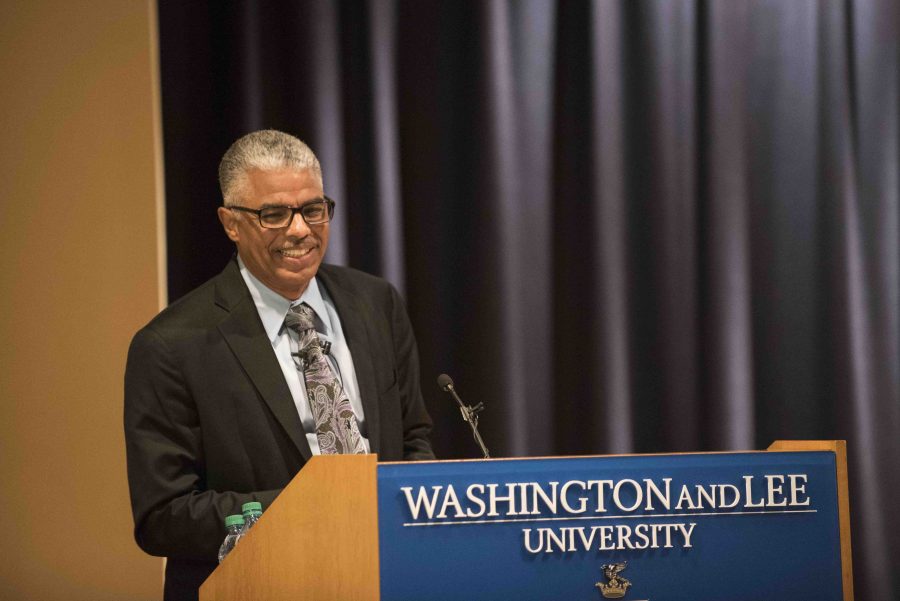Keith Woods discusses media bias, stresses importance of credibility at W&L’s 62nd Ethics Institute
Keith Woods speaks at Ethics Institute on Friday. Photo by Ellen Kanzinger, ‘18.
November 7, 2016
by Abigail Summerville
Journalist Keith Woods said that biased journalism could lead to the peril of democracy in his speech at Washington and Lee’s 62nd Ethics Institute in Journalism on Friday.
Woods, who works for NPR as its vice president for diversity in news and operations, stressed that journalism is a check and balance system in our society, and that when it is undermined by biases, de-mocracy itself is at risk.
“Bias twisted like a pretzel [leads to] democracy under assault,” said Woods.
Woods gave his audience of W&L students, faculty and community members advice on how to avoid biases in their writing in order to keep journalism credible.
“Our work is to reach for excellence, deliver greatness, and speak up boldly when anyone…conflates uninformed opinion with human perception and true bias, and then hurls that destructive mixture like a stone at the fragile face of our profession,” Woods said.
Woods’ keynote address was the only Ethics Institute event open to the public. The other events were only open to the students in Knight Professor of Media Ethics Aly Colón’s journalism ethics class. During the closed events, six fellows presented case studies to the students. The fellows included professionals from The New York Times, The LA Times and The Seattle Times, among others.
Professor Colón, who organized the weekend, worked with Woods for about 10 years at both the Poynter Institute and NPR. Colón said he chose Woods to give the keynote address because he knew Woods was capable of explaining how great journalism can combat the brutality of bias.
“[Woods’] background as an expert in ethics and diversity, as well as a journalist, enables him to explore and explain challenges that we face when it comes to the brutality that bias can present,” said Colón.
Woods shared stories from his childhood about how, even at a young age, he noticed biases in his local New Orleans newspaper. He saw how the paper had an uneven portrayal of people of color, and how it identified black people by race even if their race had nothing to do with the story.
When he questioned someone about this bias, the person said the journalists at that paper saw the black people of New Orleans as a separate society, as outsiders.
Woods gave other examples of biases he has seen in journalism, including how hurricanes in New Orleans are always portrayed as negative, but that they also have a positive side: They bring much needed rain to the region.
But Woods said that each of the bias examples he talked about is different.
“There is real bias,” Woods said. “There is the appearance of bias. And there is the perception of bias. They might all feel the same, but they are not the same.”
There are also good biases that exist that are built into journalism, Woods said. For example, there’s the bias in favor of truth and fair-ness, and the bias against corruption and discrimination of any form.
Unlike how journalists should avoid bad biases, Woods said journal-ists should not “hide or run” from these good biases, because those biases are what makes journalism indispensable.



